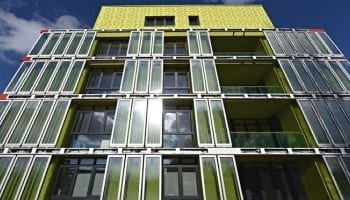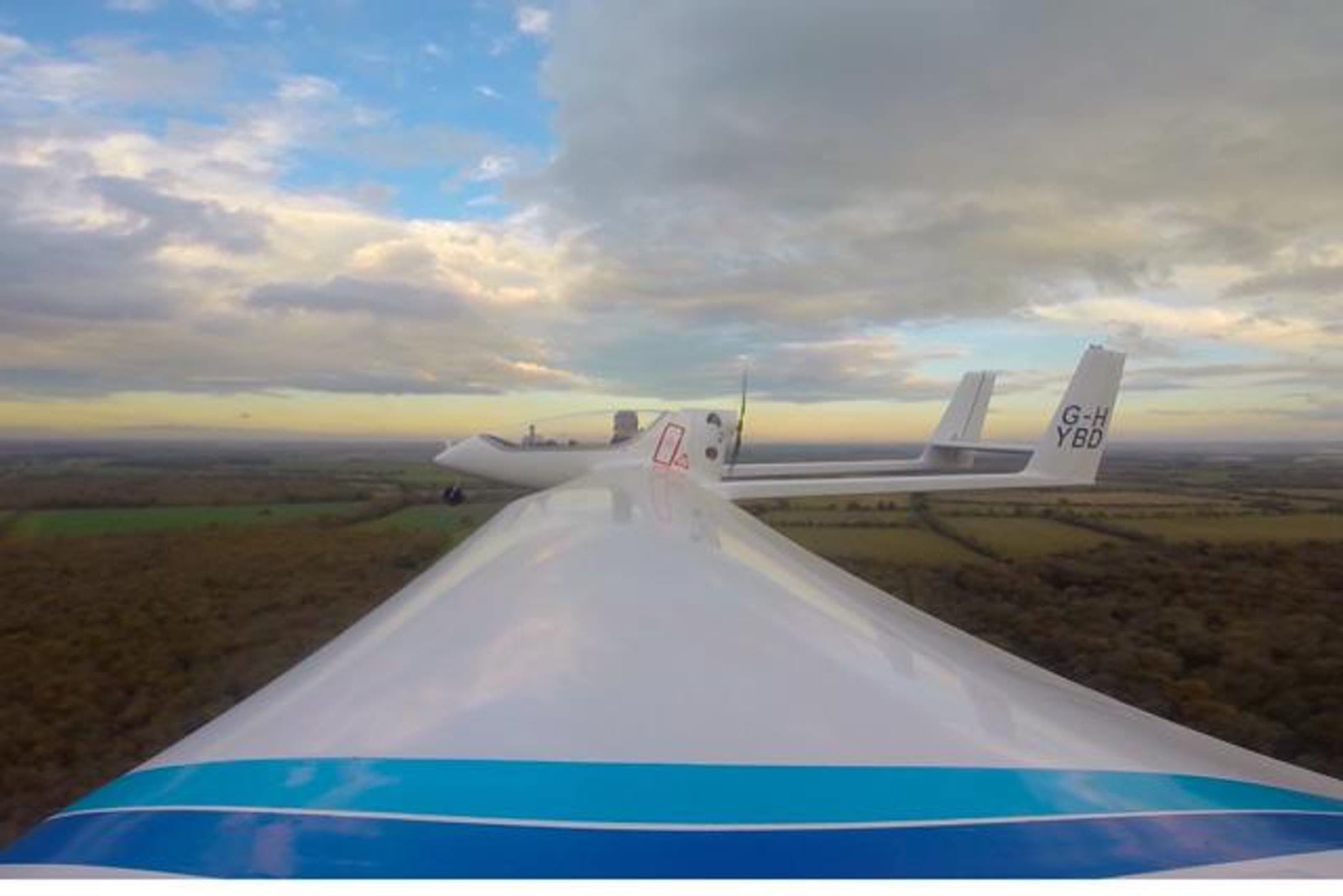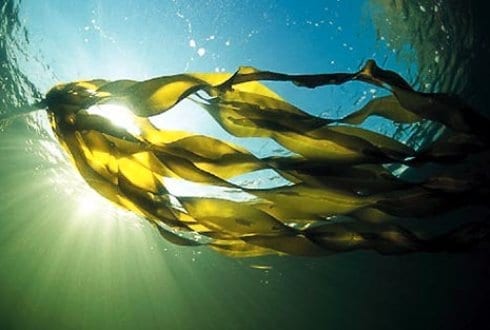
World’s first microalgae façade goes ‘live’
Windows that change their light permeability at the touch of a button, façades, whose color can be changed according to the sunlight, façades and window parts in which transparent photovoltaic modules are integrated or in which microalgae are being bred to provide the house with its own biofuel: This is what the buildings of the future could feature, or at least something similar.
“Many of these ideas are certainly within imagination end even technological feasibility, today, in particular within the field of façades which may adapt to their environment and thus improve the energy efficiency of modern buildings,” states Prof. Dr.-Ing. Lothar Wondraczek from Friedrich Schiller University in Jena (Germany). “But only a fraction of this potential has been tackled so far, as the relevant materials and production processes are still missing,” he further explains.
The challenge lies in the large size
“This structured glass contains microfluidic channels through which a functional fluid circulates. As an example, this liquid will make it possible to automatically adjust the incidence of light or to harvest exterior heat which will then be transported to a heat pump,” Wondraczek explains. The scientists will conduct detailed tests of such façade and window modules to optimize the materials and their functional interaction. Therefore, ‘LaWin’ takes will take another step forward, i. e., to outside of the laboratory: Based on the results of their laboratory findings, the scientists plan to implement the innovative façades with reference buildings in order to test them under ‘real’ conditions. “The challenge lies in the large size“, Wondraczek points out. “As of today, there is no production process for such large-sized glass sheet with integrated micro structures. Moreover, the new glass façades have to be able to be integrated into conventional window and façade systems.” They also have to be cost-effective. After all, a third of all greenhouse gas emissions in the EU and 40 percent of the energy consumption are due to the heating, cooling, air conditioning and lighting of buildings. Investments in energy efficient buildings are hence the most important levers to significantly reduce the carbon dioxide emissions and to reach the climate goals. “This is given by the laws of thermodynamics: To save and to efficiently use energy is always more beneficial than to generate it from whichever source,” the Jena materials scientist stresses. The topical area of ‘energy efficient buildings’ is therefore one of eight strategic key areas in which the European commission’s Public-Private-Partnership (PPP)-Initiative sees important possibilities for a sustainable reinforcement of the European innovation and industrial leadership in the global competition.
Read more: Intelligent façades generating electricity, heat and algae biomass
The Latest on: Intelligent facades
[google_news title=”” keyword=”Intelligent facades” num_posts=”10″ blurb_length=”0″ show_thumb=”left”]
via Google News
The Latest on: Intelligent facades
- Techtextil & Texprocess Innovation Awards highlight relevant textile industry trendson April 25, 2024 at 7:12 am
At this year's Innovation Awards at the Techtextil and Texprocess textile fairs, a total of 15 winners in eight categories were honoured.
- ‘Dead Boy Detectives’ stars tease queer awakenings, chosen family & the demon shenanigans to comeon April 25, 2024 at 5:01 am
PRIDE sat down with George Rexstrew, Jayden Revri, Kassius Nelson, and Yuyu Kitamura to kiki about the show that’s about to fill that Buffy-shaped hole in your heart forever.
- Magnolia (1999) Ending Explained: What's With The Frogs?on April 24, 2024 at 2:00 pm
Magnolia delves into the lives of its ensemble cast of characters, revealing their struggles, traumas, and moments of unexpected grace. From a troubled police officer seeking redemption to a dying ...
- ENR 2024 Top 500 Design Firms: Artificial Intelligence Ramps Upon April 24, 2024 at 12:51 pm
Commentary from the Top 500 Design Firms in 2024 reveals a shift in the use of artificial intelligence to complement design services.
- Top 5 things to know about Tata Nexonon April 23, 2024 at 3:46 am
We can highlight a few carmakers in the car industry as the leaders for their exceptional performance, latest technology and futuristic styling. Among these stereotypes, Tata Nexon stands out as a ...
- Enter today! BD+C's 75 Top Building Products for 2024on April 22, 2024 at 2:13 pm
BD+C editors are now accepting submissions for the annual 75 Top Building Products awards. The winners will be featured in the November/December 2024 issue of Building Design+Construction.
- Weiss/Manfredi deploys sensitive yet surgical design thinking when renovating the Tampa Museum of Arton April 19, 2024 at 4:34 pm
Weiss/Manfredi deploys sensitive yet surgical design thinking when renovating the Tampa Museum of Art, where a second phase is underway.
- Every Zodiac Sign Is Ruled by a Tarot Card—Here's Yourson April 16, 2024 at 4:30 pm
There have always been stereotypes associated with each zodiac sign. Geminis are known for being flighty and unemotional. Capricorns are famous for being bossy and practical. Taurus has a reputation ...
- The killer whale trainers who still defend captivity: ‘I’m an endangered species myself’on April 16, 2024 at 3:00 am
The 2013 documentary Blackfish turned orca trainers into pariahs in the US. Now some are hitting it big in China ...
- Preservation board raises concerns about Noyes center renovationon April 15, 2024 at 8:06 pm
A view of the south facade of Noyes Cultural Arts Center, 927 Noyes St. Some Evanston Preservation Commission members raised concerns at a recent meeting ...
via Bing News









